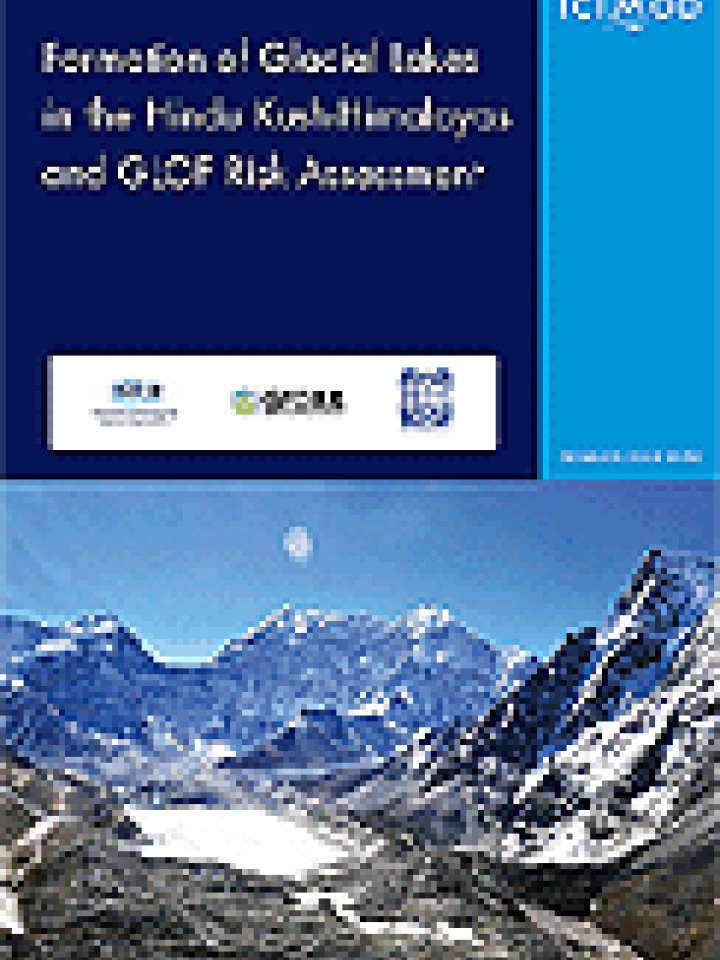Formation of glacial lakes in the Hindu Kush-Himalayas and GLOF risk assessment (2010)
This report outlines a methodology for mapping glacial lakes and identifying those that may be dangerous. Preliminary findings on selected glacial lakes are presented. While the danger has sometimes been much exaggerated, it is nevertheless essential that a rational basis for risk assessment be developed. Given the extremely mountainous, inaccessible nature, and high altitude of the immense area involved, application of a wide variety of remote sensing techniques is promoted as a necessary first step. This must be followed by detailed glaciological and geophysical field investigation of those lakes that warrant more thorough investigation. In this manner, a more secure understanding can be obtained of what responses are needed in order to protect populated areas farther downstream. More extensive scientific information about glacial lakes, enhanced by monitoring and early warning systems, together with mitigation measures, is needed. The report details the information that has already been acquired from selected possibly unstable lakes. It is intended to provide information for planners, policy makers, and development scientists, and a basis for regional collaboration aimed at reducing the glacial lake hazard.
Cases are presented against the background of widespread thinning and retreat of glaciers leading to the formation of numerous melt-water lakes in their lower sections. The lakes frequently accumulate behind end moraines that are inherently unstable. As the lakes increase in size, hydrostatic pressure and associated factors can lead to catastrophic drainage (glacial lake outburst floods, or GLOFs); over the last thirty years more than twenty have occurred in the Hindu Kush-Himalayan region with loss of life and extensive property damage downstream.
At the same time, it asserts that there is no doubt that the driving force is the current climate warming. It presents individual case studies of the catastrophic outburst (glacial lake outburst floods) from such glacial lakes demonstrating the potential for acceleration of extensive downstream damage and loss of life is high. The report also attempts to modify the potentially damaging misrepresentation made on some occasions in the news media and even in some scientific literature.
Explore further
